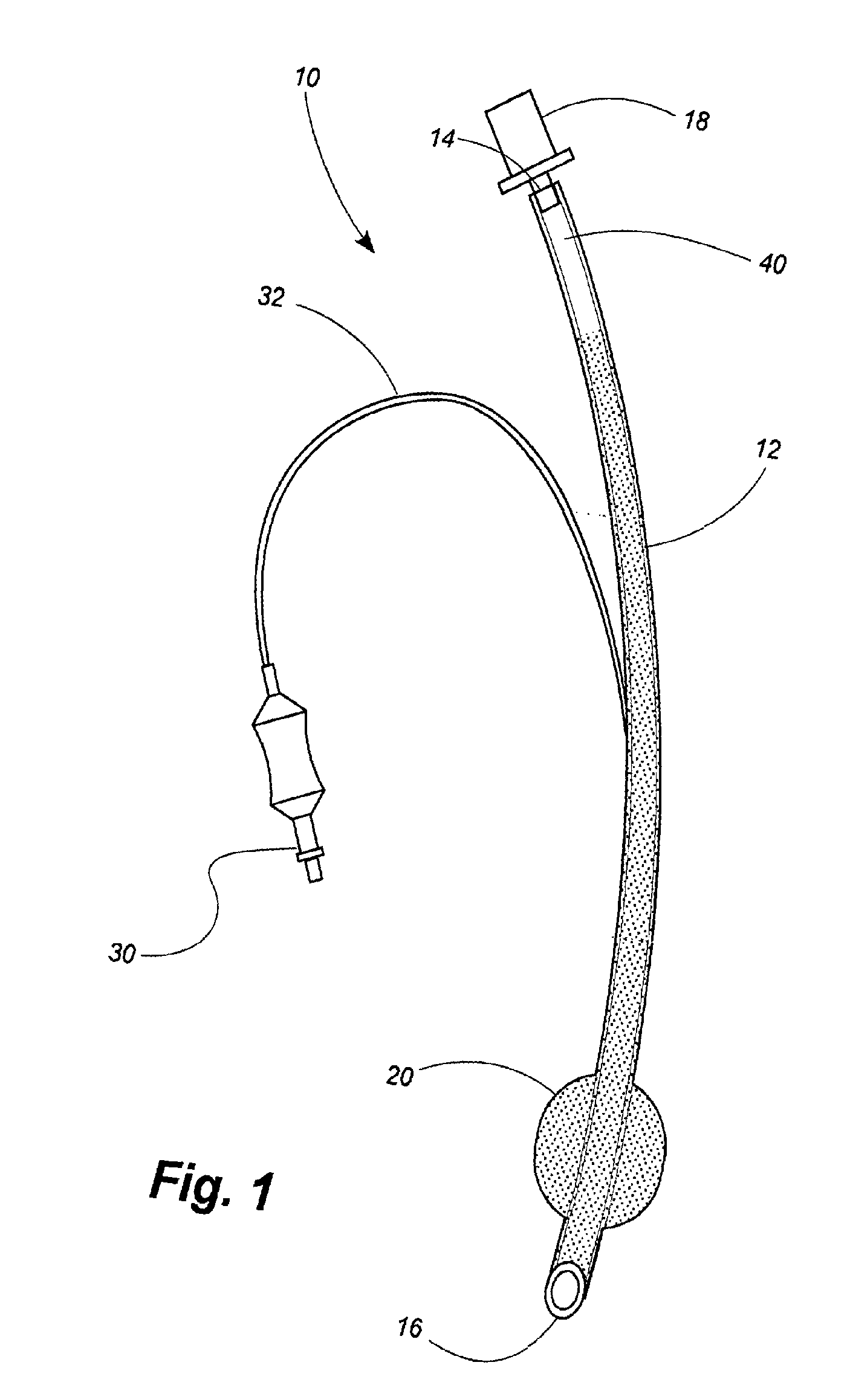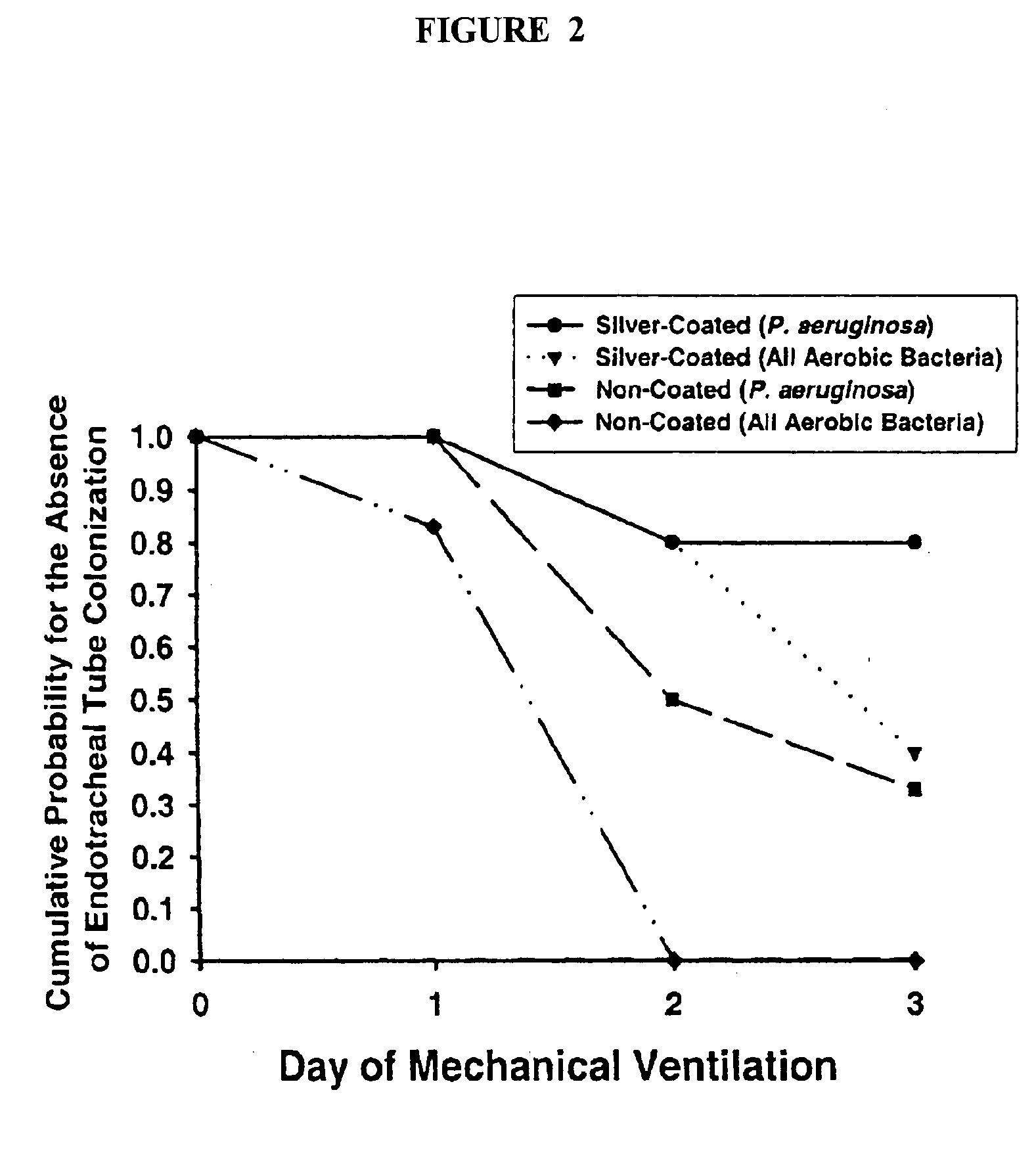Antimicrobial Compositions containing colloids of Oligodynamic Metals
a technology of colloids and metals, applied in the field of polymer compositions, can solve the problems of poor adhesion, lack of coating uniformity, and many drawbacks of noncontact deposition coating techniques, and achieve the effect of reducing settling and agglomeration
- Summary
- Abstract
- Description
- Claims
- Application Information
AI Technical Summary
Benefits of technology
Problems solved by technology
Method used
Image
Examples
example 1
[0171] To form the coating solution, a 4.7% solution of a polyether polyurethane-urea block copolymer available from CardioTech International, Inc. was prepared in a mixture of THF / alcohol in a 75 / 25 ratio by weight. A sufficient quantity of 10% silver nitrate (AgNO3) solution in water was added to the CardioTech copolymer solution to produce a final silver concentration of approximately 15%, based on the weight of coating solids in the solution. An aqueous solution of 1.0% sodium chloride (NaCl) was added to the solution in an amount sufficient to react with 50% of the AgNO3 to produce a colloid of the poorly water soluble salt, AgCl, from half of the AgNO3 in the coating solution. The NaCl solution was added slowly to the polymer solution and the solution began to turn cloudy with the formation of the fine colloidal AgCl. The amount of water in the final coating solution was about 30% of the total solvent weight. The final polymer concentration in the coating solution was 3.3%, ba...
example 2
[0173] The process of Example 1 was repeated, except that a 1.0% solution of zinc chloride was used in place of the 1.0% solution of sodium chloride, resulting in the formation of a silver chloride colloid and zinc nitrate from half the silver nitrate in the coating solution. Zinc chloride was added in an amount of one half the amount of NaCl added in Example 1 because one mole of zinc chloride reacts with 2 moles of silver nitrate.
example 3
[0174] The process of Example 1 was repeated, except that a 1.0% solution of copper chloride was used in place of the 1.0% solution of sodium chloride, resulting in the formation of a silver chloride colloid and copper nitrate from half the silver nitrate in the coating solution. Copper chloride was added in an amount of one half the amount of NaCl added in Example 1 because one mole of copper chloride reacts with 2 moles of silver nitrate.
PUM
| Property | Measurement | Unit |
|---|---|---|
| temperature | aaaaa | aaaaa |
| particle size | aaaaa | aaaaa |
| temperature | aaaaa | aaaaa |
Abstract
Description
Claims
Application Information
 Login to View More
Login to View More - R&D
- Intellectual Property
- Life Sciences
- Materials
- Tech Scout
- Unparalleled Data Quality
- Higher Quality Content
- 60% Fewer Hallucinations
Browse by: Latest US Patents, China's latest patents, Technical Efficacy Thesaurus, Application Domain, Technology Topic, Popular Technical Reports.
© 2025 PatSnap. All rights reserved.Legal|Privacy policy|Modern Slavery Act Transparency Statement|Sitemap|About US| Contact US: help@patsnap.com



